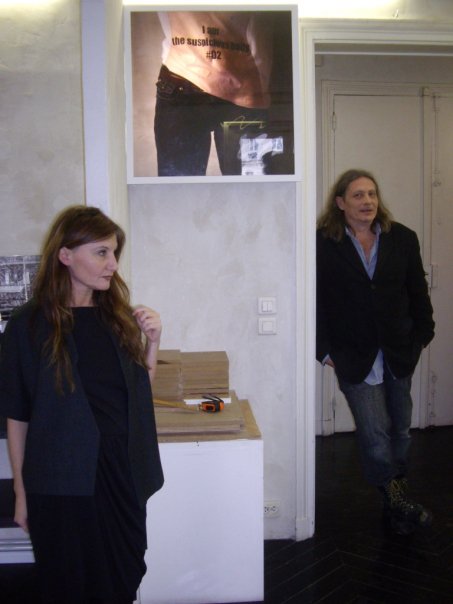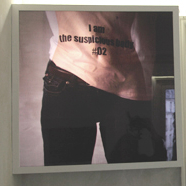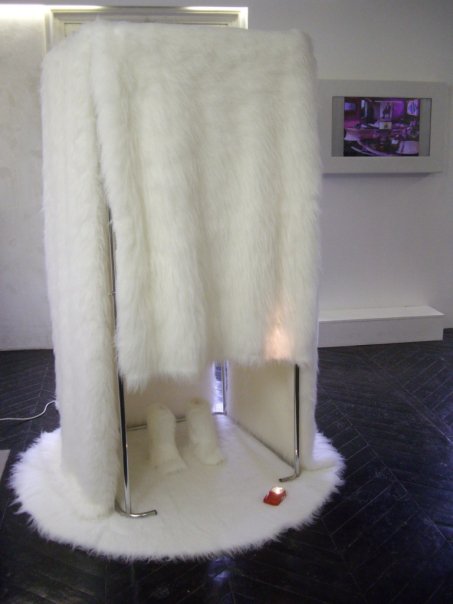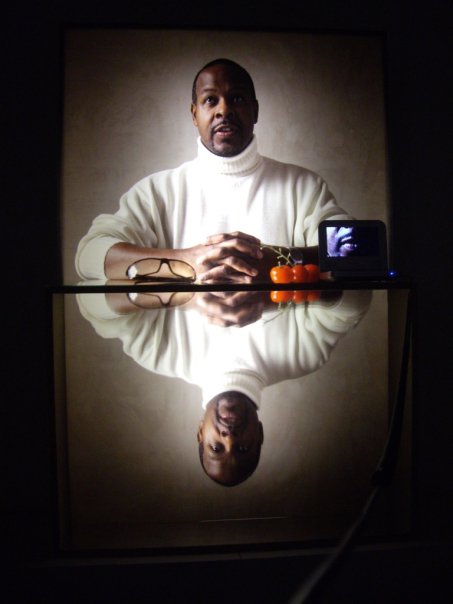by Antonio A. Casilli (Centre Edgar-Morin, EHESS) [1]
If you are willing to venture off the beaten tracks, Paris art scene might still meet your expectations in terms of authentically thought-provoking experiences. As part of the Swedish Institute’s festival “Hors les murs”, Mildred Simantov and Nils Thornander have designed Information Partielle. Definitely an exclusive exhibition: it is accessible only by appointment and it takes place in a private apartment in the northern part of the French capital. The exhibition is on until March 26, 2010, and it’s worth an hour of your oh so precious time. Just drop a line to the following email address: sanzokuhnam@orange.fr. Don’t forget to mention you are a proud reader of Bodyspacesociety. Not only that will improve your chances of getting in – that’ll also provide you with an interpretative frame-set to help you navigate through this most disparate collection of objects.

Body: The visitor is welcomed by Suspicious Bodies, a satirical take on the use of corporeal images within the contemporary public sphere. Fluctuating between the conflicting poles of forced opaqueness and forced transparency – between the burqa and the bodyscanner, so to speak – the human figure becomes a threatening presence. Thornander and Simantov reflect these concerns through a juxtaposition of nude bodies and fashion photos. A retro-illuminated frame displays a naked body over which a suspicion is cast, through the garments, the colors, the very message on a t-shirt that appear when the light is switched on. Indecisiveness itself becomes an element of style, dialectically contradicting the initial frontal nudity.
Space: imagine you voyage towards the limitless horizon of a snowy northern region. Out in the distance, you see a bizarre object, halfway between a fur igloo and a telephone booth. Inside, a computer playing an eerie music and asking increasingly upsetting questions: “Are you lost? How can I help you? What are you wearing? Where are you going?”. This is the idea underlying May I help you. Now in its Parisian instantiation, it will eventually be installed in the North Pole, where it “will probably disappear as soon as the ice melts as a consequence of global warming”, confesses Mildred Simantov.
Society: Climate justice and environmental issues are addressed in other pieces presented in Information Partielle. I won’t necessarily name them here, because I want to take a few lines to mention the installation that concludes the exhibition – and that really adds a wow factor to it all. Strange fruit is both a shrine to science and a monument to chaos. It is also the story of an individual torn between biological determinism and social influences.
In fact, Strange Fruit is the sound portrait of Brian K. Lucas, an American scientist/singer whom I would not exactly describe as an “everyman figure”: when he’s not busy publishing stuff like this one, the eccentric genius tours the world with artists like this one. A multifaceted man makes for a multifaceted portrait. Thus the installation takes a complex stance on “genetic fatalism” and on inter-individual social variances. One cannot help but admire the fluidity of this composition, both on a visual and on a discursive level. A few minutes suffice to bring together issues of race, history, national culture and biology and to consistently accomodate them into a piece of artwork that modifies our perception of how scientists conceive evolution – and of how artists figure out musical forms.
Ps. Except when differently specified, the images for this post are (c) Alexandre Callay – http://www.callay.com/


